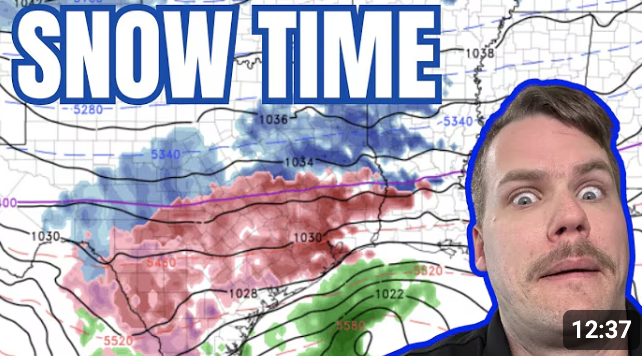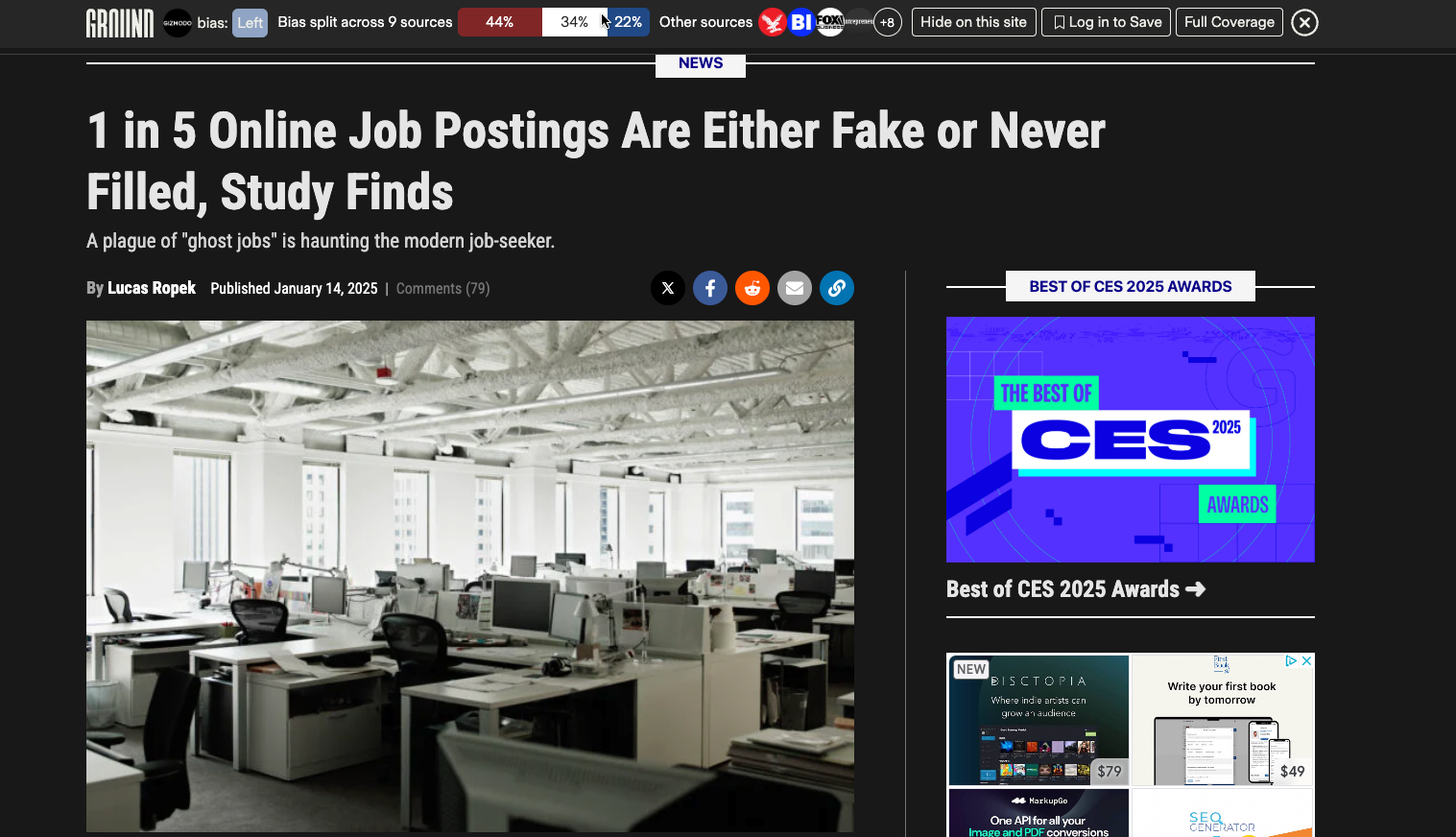Click Bait

If there was a universal topic for conversation in Texas, it would be about the weather.
This week we are having another cold front move through the Lone Star State.
The local news station spent ten minutes describing worst-case scenarios, complete with swirling graphics and ominous music.
As someone who lives in the Texas Hill Country, almost everyone has a sense of PTSD when it comes to ice storms.
Our county was devastated by the 2021 Great Texas Freeze and it took months for many people to move back into their homes.
So if the temperatures fall below 32 degrees, the shelves at the local H-E-B are emptied.
If you ever want to date yourself, just ask someone if they remember Harold Taft.
Taft was the iconic NBC Channel 5 meteorologist in Dallas and was one pioneer of forecasting local weather.
He would interpret his famous radar screen with its spinning luminescent arc and describe Texas' frequent impending tornados and thunderstorms.
We actually had a storm cellar growing up and more than once, Taft sent us scurrying below ground lest we end up on Oz.

But there was no hype here. Our families trusted Harold Taft.
And because Texans have a genetically programmed interest in the weather, it drove viewership to local news.
News stations didn't build billboards; they built radar towers.
The set up remote weather stations in communities where then needed to drive up their audience. They sent reporters out in Dan Rather-style to pose before dark clouds and sleet.
The weather was the news.
And it was reported from a single forecast from a boring federal agency: the National Weather Service.
But today there are hundreds of "models" with names like "the European", GFS, COSMO and the like.
This allows weather reporters to always pick a model with the worst forecast.
Let's explore this click bait, and how it is killing local news - and likely your local news station.
WEATHER AND THE ALLURE OF DIRE PREDICTIONS
These days, places like YouTube and Instagram often magnify rare or low-risk weather outcomes to spark fear and pull in crowds.

Headlines like “Texas Faces the Storm of the Century” gain traction because fear is a powerful magnet.
That style of content thrives on shock value.
It racks up clicks and forward-shares, but it also leaves people stressed and puzzled. While computer models show plausible scenarios, real outcomes can hinge on shifting factors. A slight change in conditions can reduce the threat dramatically.
Yet creators often keep the alarmist angle, even when data suggests a lower threat.
The question becomes: how much value do creators get from that style of engagement?
And does it risk the loss of a valuable audience?
Projections that don’t pan out still pull traffic. Channels profit, but watchers end up feeling burned or misled.
But YouTube weather creators are changing that approach and being very authentic about how difficult it is to predict weather - and why you shouldn't fall for the hype.
I'll make a prediction here too: this type of authenticity will kill local news stations.
When local network news stations lose the weather audience, they will lose the viewership game. That will leave them with only sports and lifestyle, with the latter having already become nothing but pay-to-play content.
So forget politics and the shift to Joe Rogan for network news. It will be the loss of trust over the weather that will kill your local news station.
TRAVEL ADVISORIES AND CONFUSION
A similar pattern appears in travel updates.
Creators will label content “BREAKING: NEW TRAVEL RULES FOR 2025!” to spark curiosity.
In truth, some of these guidelines have been floating around for years. Mixing a bit of accurate advice with speculation raises confusion for viewers.
It’s tough to sift out which part of the narrative is real and which part is drama.
One AI-driven video might combine old regulations with a dash of fresh gossip, making it sound like a sweeping overhaul is around the corner.
A sample of overblown content can be found here
Meanwhile, trusted creators try to set the record straight, providing context without the hype:
THE ENTANGLEMENT OF AI
AI has made content creation faster than ever.
It can instantly produce headlines, summaries, or short videos.
The snag is that AI doesn’t have the same filters or ethics as a thoughtful human. It might generate a clip that blends facts from multiple sources without verifying relevance.
Some folks do this on purpose, aiming to drive engagement at all costs. Others may not even realize a tool fed them an outdated idea.
The result is a flood of questionable material.
This affects much more than casual viewers.
Companies can be surprised if a random rumor or half-baked forecast spreads, prompting a scramble to do damage control.
JOBS AND CANDIDATE FATIGUE
Overstatements don’t just live in weather or travel. They appear in job markets too.
Picture job postings that promise fantastic growth and endless perks. Then you submit an application and never hear back.
A recent study found that 1 in 5 online job postings are fake or never intended to be filled.

This leads to mass applications, wasted time, and mounting frustration for those seeking roles.
Companies end up with piles of irrelevant resumes because candidates feel pressured to apply to everything. The inflated claims in postings add another layer of confusion, making it hard for job seekers to figure out what’s real and what's not.
FINDING A PATH THROUGH CLICKBAIT
So how do you sort through all this click bait? Here are a few tips:
1) Confirm sources. Take a second look before passing the information along. A bit of digging can reveal which sites are more credible. Look at the number of views, likes, and comments as another proof point.
2) Think critically. If something sounds unbelievable or too dramatic, consult multiple angles. That travel tip for 2025 might have been around in some form since 2010.
3) Use tools. Services such as Ground News compare coverage on the same topic across various outlets. It’s easier to spot the same rumor repeated across different corners of the internet. (This is the only news source I use in 2025.)
4) Teach basic media literacy. Whether you’re part of a corporation or a small outfit, train teams to question suspicious headlines.
5) Keep track and report. If you see false claims about your brand floating around, address them fast. Reach out to the source or the platform to correct misinformation.
THE BIG TAKEAWAY
The digital world is awash in sensational stories, from weather predictions that never quite develop to job postings that don’t exist.
Some of these are intentional, aimed at exploiting our instinct to click on the most dramatic headline.
Others come from misinterpretations of AI-generated text or outdated data.
The net result is a tangled environment where real and false details mingle.
Our best defense is to pause and question.
When a forecast seems unbelievable, consult a credible news outlet.
If a travel warning sounds too scary, cross-reference government advisory pages or respected travel blogs.
If a job posting claims the moon but no one ever replies, it might be part of that questionable 1 in 5.
Remember that the hype machine runs on clicks, and fear is a big driver of online engagement.
Yet we have tools, common sense, and a bit of research skill that can clear away the smoke.
And, always remember to question if anyone can ever forecast Texas weather.
Podcast:

Member discussion